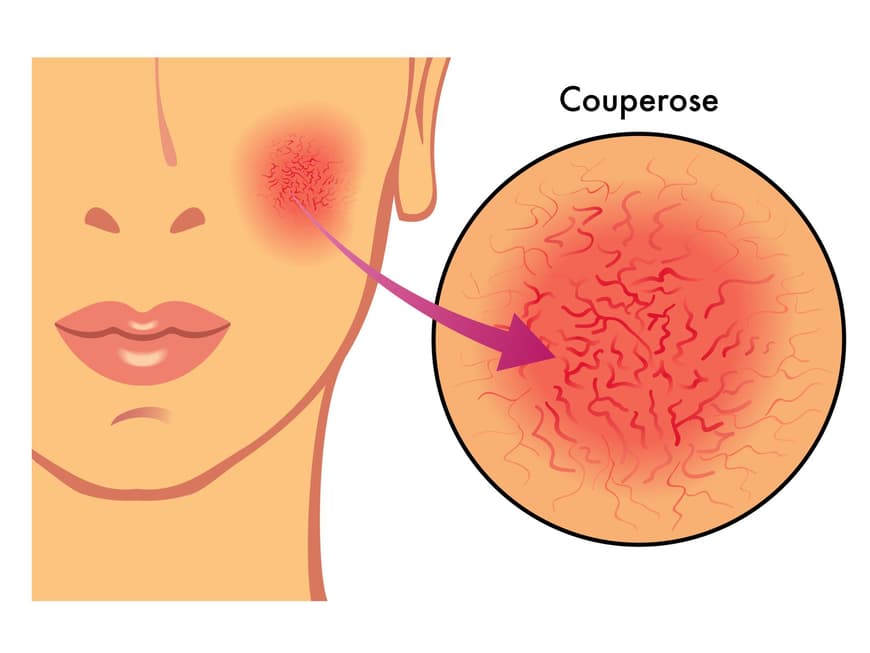
The exact cause has still not been researched. The first signs, red veins on the face, usually appear between the ages of 30 and 40. We explain the three stages of the disease and give tips on how to alleviate the symptoms.
Severity 1
The disease goes through various stages. "Couperose" is the term for what is known as severity 1. The symptoms: reddened skin and visibly dilated veins. The red veins run across the cheeks and nose in particular. The skin burns or stings and sometimes itches. Initially, the redness subsides after a while, but later it becomes permanent.
Severity 2
"Rosacea papulopustulosa" is the scientific name for this stage. The red veins on the face are now joined by nodules and pus-filled pimples - the skin condition could also indicate acne.
Severity 3
This form of the disease is called "glandular hyperplastic rosacea". In this stage, a nodular thickening of the nose forms, sometimes also on the ears. In rare cases, growths develop on the eyelid. Men are usually affected.
Treatment
Although rosacea cannot be cured, the symptoms can be alleviated with certain creams and the growths can be removed with a laser. The dermatologist will prescribe the right treatment. pH-neutral cleansers and creams should be used for daily care. Alcohol-based ointments and cleansers and oily skin care products are not suitable.
